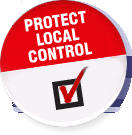State Status
No Preemption
News Summary
State Smoking Restrictions for Private-Sector Worksites, Restaurants, and Bars--United States, 1998 and 2004
Publication Date: 2005-07-08
- Author:U.S Centers for Disease Control and Prevention
- Publication:The Morbidity and Mortality Weekly Report
Secondhand smoke is a known carcinogen (1). Exposure to secondhand smoke causes approximately 35,000 heart disease deaths and 3,000 lung cancer deaths among nonsmokers in the United States every year (2). Implementing policies that establish smoke-free environments is the most effective approach to reducing secondhand smoke exposure among nonsmokers (1). Smoking restrictions and smoke-free policies can take the form of laws or regulations implemented at the state or local level or of voluntary policies implemented by private employers and businesses. Smoking restrictions limit smoking to certain areas within a venue; smoke-free policies ban smoking within the entire venue. One of the national health objectives for 2010 is to establish laws in all 50 states and the District of Columbia (DC) that prohibit or restrict smoking in public places and worksites. A related objective calls for all worksites to voluntarily implement policies that prohibit or restrict smoking. To assess progress toward meeting the first objective, CDC reviewed the status of state laws restricting smoking as of December 31, 2004, updating a 1999 study that reported on such laws as of December 31, 1998 (3). This report summarizes the changes in state smoking restrictions for private-sector worksites, restaurants, and bars that occurred during 1999--2004.The findings indicate an increase in the number and restrictiveness of state laws regulating smoking in private-sector worksites, restaurants, and bars from 1999 through 2004. At the end of 2004, however, 16 states still had no restrictions on smoking in any of the three settings considered. Although secondhand smoke exposure among U.S. nonsmokers has decreased sharply in recent years, a substantial portion of nonsmokers continue to be exposed to secondhand smoke (4).
The smoking restrictions in effect in each of the 50 states and DC* as of December 31, 1998, and December 31, 2004, were categorized into one of four levels for each of the three settings included in this study (Table). These settings were selected because worksites are a major source of secondhand smoke exposure for adult nonsmokers (1), and because workers in restaurants and bars are exposed to especially high levels of secondhand smoke (5)...
